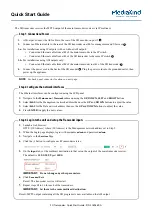
Jetter Wu, 10668, 2016/06/27
Jetter Wu, 10668, 2016/06/27
Jetter Wu, 10668, 2016/06/27
Jetter Wu, 10668, 2016/06/27
• On twin-drive boats, the transducer should be mounted between the
drives, if possible.
Fairing Block Angle Cut
A fairing block positions your transducer parallel to the water line for increased
sonar accuracy. You must measure the deadrise angle of your boat hull to
determine if a fairing block is necessary to mount the transducer. If the
deadrise angle of your mounting location exceeds 5°, you should use a fairing
block to mount the transducer.
Deadrise Angle
Deadrise is the angle formed between a horizontal line and a boat hull at a
single point. You can measure the deadrise angle with an angle finder, a
protractor, or a digital level. You can also ask your boat manufacturer for the
deadrise angle of the specific point on your boat hull.
NOTE: A boat may have several deadrise angles depending on the shape of
the hull. Measure the deadrise angle only at the location where you plan to
install the transducer.
Cutting the Fairing Block
CAUTION
Always wear safety goggles, ear protection, and a dust mask when drilling,
cutting, or sanding.
1
Using wood screws, attach the fairing block to a piece of wood.
The wood becomes a cutting guide for the fairing block.
2
Measure the deadrise angle of the hull at the mounting location.
3
Tilt your table saw blade
À
to match the deadrise angle and secure the
cutting fence.
4
Position the fairing block on the table so the cutting guide rests against the
fence
Á
and the angle matches the angle of the mounting location .
5
Adjust the cutting fence to ensure the fairing block has a minimum
thickness of 13 mm (
1
/
2
in.).
NOTE: The maximum cutting angle of the fairing block is 25°.
6
Cut the fairing block.
7
Using a rasp or power tool, shape the fairing block to the hull as precisely
as possible.
8
Use the remaining section of the fairing block as the backing block inside
the hull.
Cored Fiberglass Boat Hull Installation Instructions
Thru-Hull Transducer in a Cored Hull with a Fairing Block
If the deadrise angle of your mounting location exceeds 5°, you must use a
fairing block to mount the device.
Drilling the Transducer Stem Hole and the Anti-Rotation Bolt Holes in a
Cored Fiberglass Hull
Before you can drill holes for the anti-rotation bolts, you must drill the hole for
the transducer stem (page 3) and you must cut the fairing block (page 3).
WARNING
The device must be installed with at least one of the included anti-rotation
bolts. Failure to do so could result in the device rotating while the boat is
moving and could cause damage to your vessel.
The core must be cut and sealed carefully to protect against water seepage.
1
Select a mounting location without surface irregularities or obstructions.
2
Using the template, mark the location of the stem hole and anti-rotation
bolts.
3
Drill a 3 mm (
1
/
8
in.) pilot hole through the template and hull at the stem
hole location.
The hole must be perpendicular to the water surface.
4
Place masking tape over the pilot hole and surrounding area outside the
hull to prevent damage to the fiberglass.
5
Using a 25 mm (1 in.) bit at the stem hole location, drill from outside the
hull through the outer skin
À
, inner skin
Á
, and the core
Â
.
The hole must be perpendicular to the water surface.
6
Sand and clean the inner skin, core, and outer skin around the hole.
7
Seal the exposed inner core with epoxy
Ã
, and allow the epoxy to set
thoroughly.
8
While holding a drill with a 9 mm (
3
/
8
in.) bit plumb, drill the anti-rotation
bolt holes through the hull from outside the hull.
The holes must be perpendicular to the water surface.
9
Sand and clean the area around the holes.
Applying Marine Sealant to a Thru-Hull Transducer
You must apply marine sealant to the transducer to ensure a tight, waterproof
seal between the fairing block and the hull. Do not apply sealant directly to the
stem or anti-rotation bolts.
Apply marine sealant
À
around the base of the stem and anti-rotation
bolts on the transducer.
Installing the Transducer with a Fairing Block
It is recommended that two installers complete these instructions, with one
positioned outside the boat and one inside the boat.
NOTE: When installing the transducer in a cored fiberglass hull, avoid over-
tightening the nuts to prevent damaging the hull.
1
If the anti-rotation bolts
À
are installed on your transducer, remove them.
2
Apply marine sealant at the base of the anti-rotation bolts and transducer
stem
Á
.
Installation Instructions
3
Jetter Wu, 10668, 2016/06/27





































